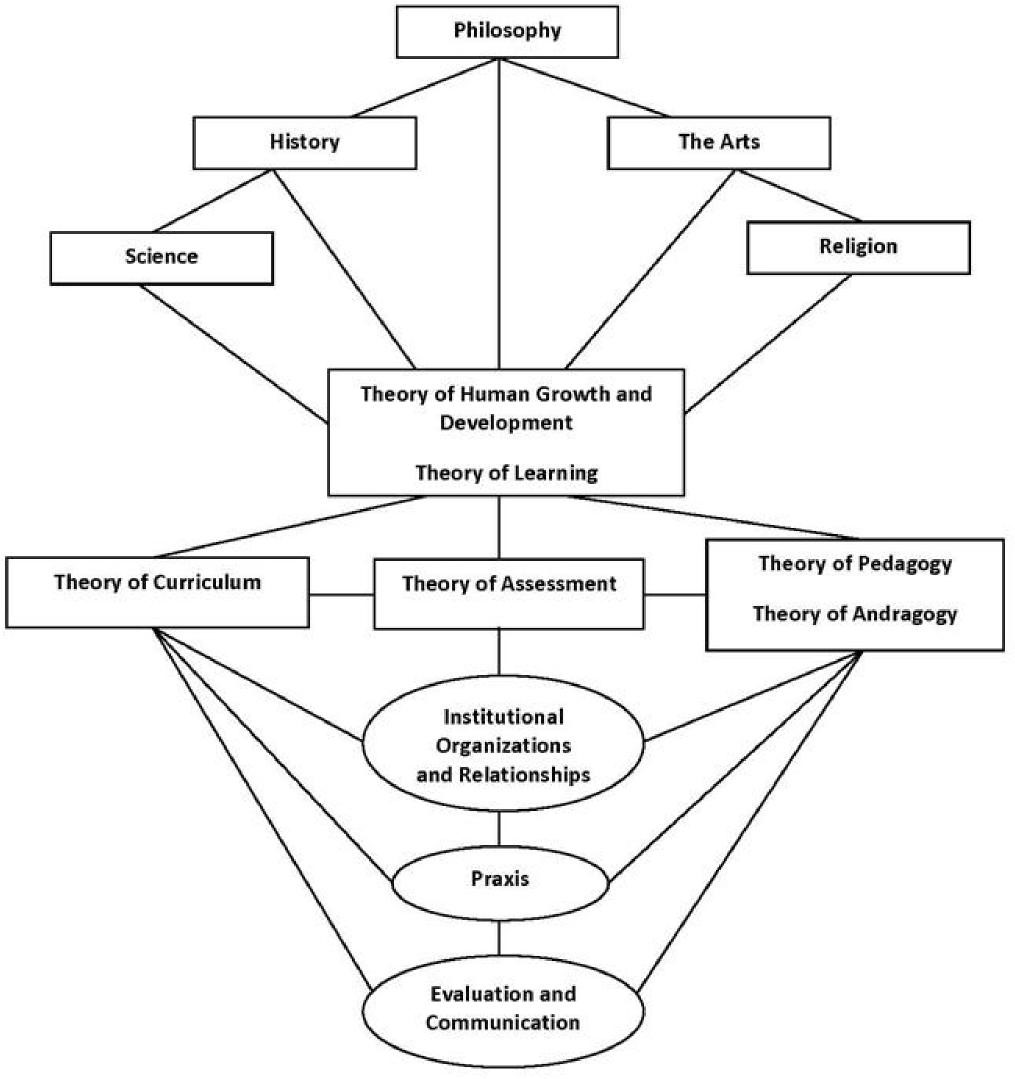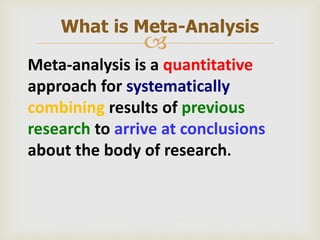
- META ANALYSIS DEFINITION IN EDUCATIONAL RESEARCH SOFTWARE
- META ANALYSIS DEFINITION IN EDUCATIONAL RESEARCH TRIAL
For a short, highly selective bibliography, please see the Selected ERIC Documents Citations below. Also, once you have selected this search option, you may edit the given strategy to introduce concepts into the search to accommodate your specific needs or, you can build an entirely new search strategy in the ERIC Search Wizard. If you would like to ensure a current bibliography of ERIC documents for this topic, then we highly recommend that you pursue this option simply click on the link above, then click on Search in the screen that follows. This search option employs the electronic Thesaurus of ERIC Descriptors as the search interface for the ERIC documents database. BlosserĮRIC DOCUMENTS CITATIONS Dynamic (i.e., Live) Search of the ERIC Documents Database for Meta Analysis in Educational Research

Meta-Analysis Research on Science Instruction - Patricia E. The Case for Validity Generalization - Fred Rafilson Meta-Analysis in Educational Research - Robert L. Glass offered the definition, Meta-analysis refers to the analysis of analyses.the statistical analysis of a large collection of analysis results from individual studies for the purpose of integrating the findings. The methodology of research synthesis according to principles of quantitative data analysis was advanced greatly when Gene V Glass introduced meta-analysis in 1976.
META ANALYSIS DEFINITION IN EDUCATIONAL RESEARCH SOFTWARE
What software exists to support meta analytic data analysis? What critiques of the methodīy what statistical methods can meta analyses be accomplished? Of meta analysis to educational research. Please provide a definition, explanations, and examples of the application

The Clearinghouse on Assessment and Evaluation Meta Analysis in Educational Research - An Overview
META ANALYSIS DEFINITION IN EDUCATIONAL RESEARCH TRIAL
“Numerous organisations now recommend or require raw data to be made available, including the International Committee of Medical Journal Editors, which recently proposed that clinical trial data sharing be a ‘condition of … publication’.Library | SearchERIC | Test Locator | ERIC System | Resources | Calls for papers | About us Fortunately, the situation in medical research is far ahead of that in the soft sciences. So much could be learned by secondary analyses of original study data. Studies that ignored the mediating variable of puberty and averaged across a wide range of ages have lost valuable knowledge that might be recovered if the original data were available to meta-analysts. It is now well-known, for example, that certain stimulants like caffeine will calm prepubescent children while they hype up postpubescent children. Primary statistical analyses often obscure mediating relationships that might someday prove to be crucial. Trained as a statistician, he is an expert in psychotherapy research, evaluation methodology, and policy analysis.Ī: Some of the shortcomings of meta-analysis applied to the soft sciences could be overcome if those synthesising the results of multiple studies had access to the raw data from those studies.

Johnson award of the American Educational Research Association, as well as the AERA’s career award for Distinguished Contributions to Research. Glass has won multiple honours for his work, including the Palmer O. A Regents Professor Emeritus at Arizona State University, he is also a Lecturer at San José State University. Glass is a Research Professor at the University of Colorado Boulder and a Fellow and senior researcher at the National Education Policy Center. In the Q&A following, Glass explains and reflects on meta-analysis and its uses and abuses inside and outside of education. But long before Hattie came Gene Glass, whom the Oxford English Dictionary credits with coining the term in 1976 in connection with his work on psychotherapy. Hattie synthesised the results of multiple meta-analyses to provide guidance on what influences student achievement. In today’s education world, the approach is often associated with Australian education professor John Hattie, who is best known for his popular 2009 book, Visible Learning. Meta-analysis is a statistical technique that combines data from multiple studies on the same topic to explore trends.


 0 kommentar(er)
0 kommentar(er)
